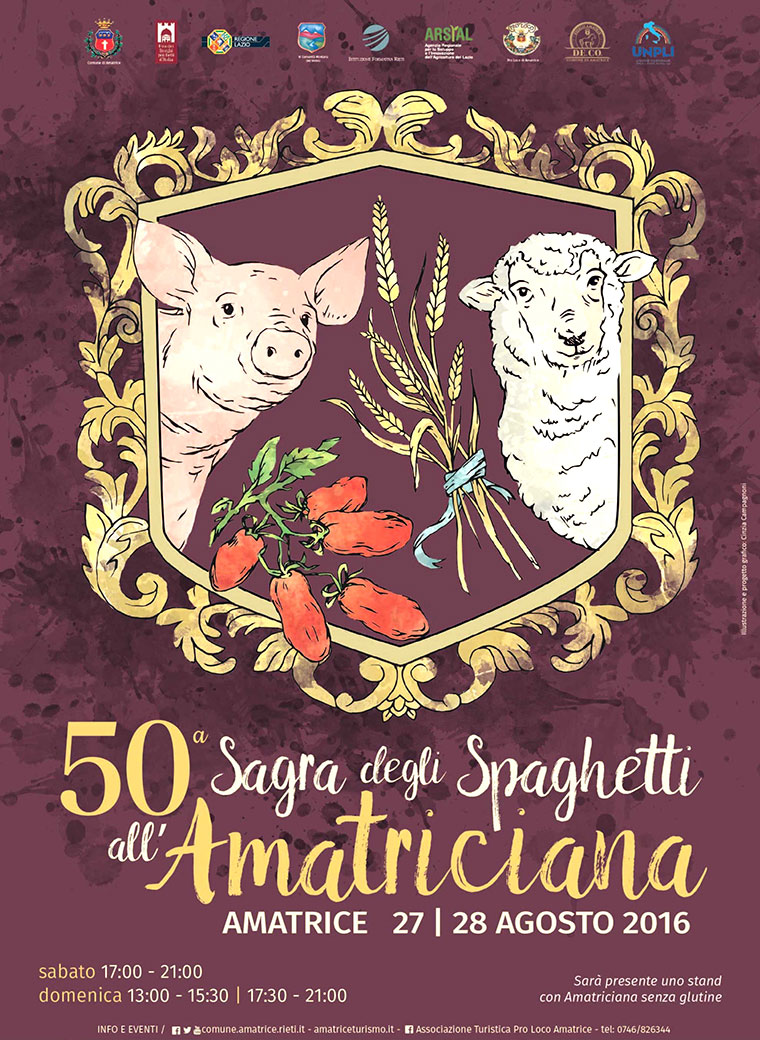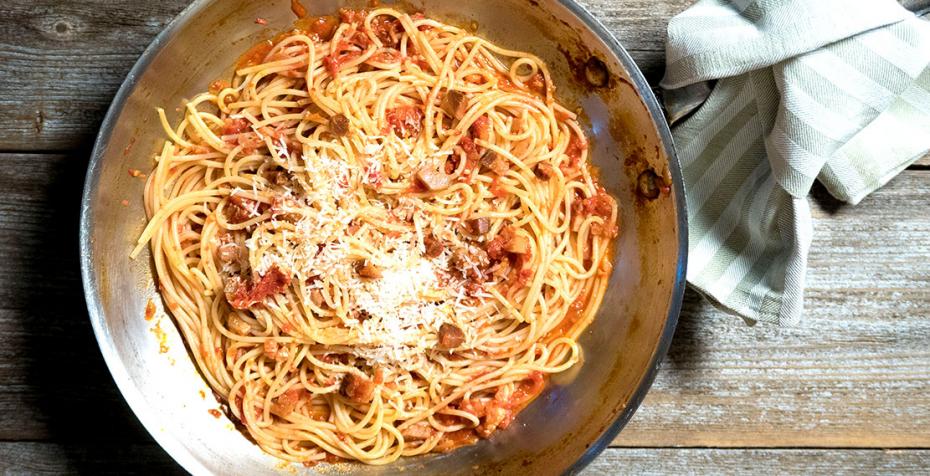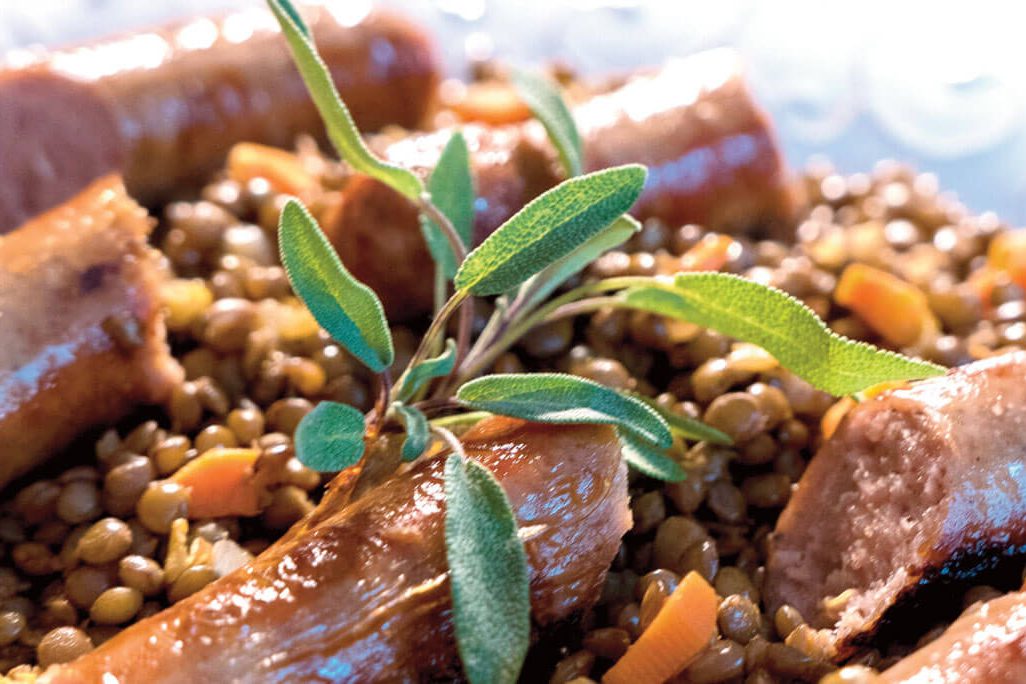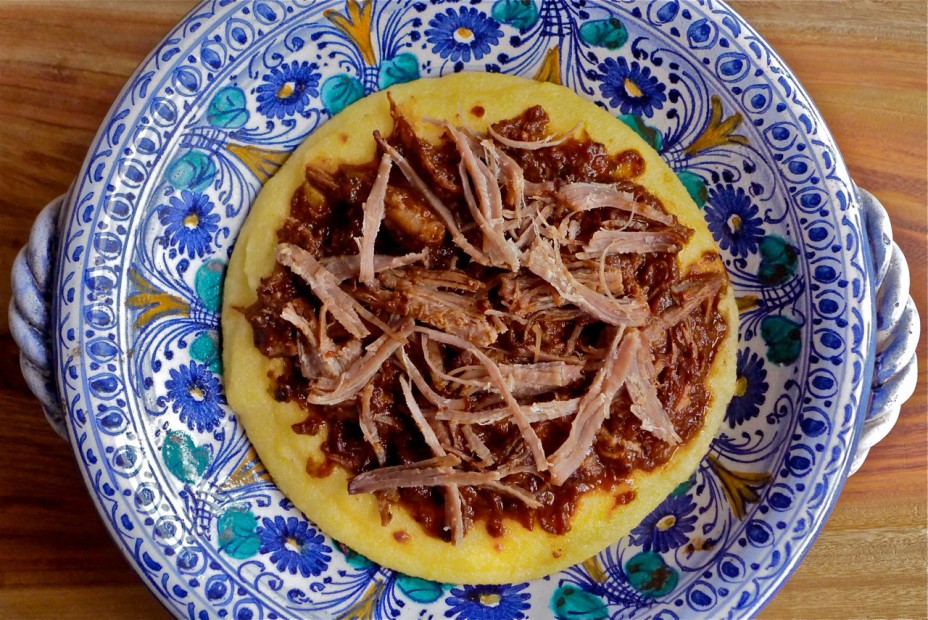It is not easy to imagine that streets paved by the Romans that we still walk today could tremble savagely beneath our feet like they did in Amatrice on August 24, a town famous around the world for a dish invented by local shepherds hundreds of years ago. The 50th anniversary of the annual sagra to celebrate spaghetti all’amatriciana was only three days away and the hotels were full of visitors in town for the one of the most famous food festivals in Italy.
I heard the news just after midnight, coincidentally nearly a year to the day that my husband Nat and I drove the ancient Roman roads for the picturesque mountain villages of the Apennines—Norcia, Amatrice, and Ascoli Piceno, where the Umbria, Lazio, and Marche regions merge. I was still working in my kitchen, up to my elbows preserving the last of the summer’s tomatoes. My tears mingled with tomato juice on the cutting board as I listened to the radio and called to mind my first stop there many years ago to learn the secrets of the best “sughetto all’amatriciana,” as the famous sauce was known in the local parlance.
The following morning, I awoke to the headline, “Mayor of Amatrice: “Non c’è piu!” —“It is no more!”

The rest of the day was all but lost except for picking up where I left off the night before preserving the remaining tomatoes that my daughter had brought me from her CSA. There was a mere two and a half pounds of Ox Hearts, a rich red, thick-walled variety to put up. I’d never seen that heart-shaped type before, but a bite of one that had split open proved dense yet succulent, with a bracing sweetness. There were just enough of them to make a sughetto to cover a pound of our favorite spaghetti, which we took as a sign. Off Nat went to buy a fresh hunk of pecorino and pancetta (guanciale was not to be found) for the proper makings of the dish, the method for which I had been carefully instructed so long ago.
At dinner, we said grace and remembered the little city founded by the ancient Sabines on the soft slopes of the green Tronto Valley that survived Romans and Lombards, Angevines and Aragonese, Fascists and Nazis, and hosts of other menaces in between, but not the earthquake of 2016; a town where the people once regaled themselves with spaghetti anointed with tomato, bacon, and sheep cheese. We ate, grateful for the dish they invented. Tragically, there will be no Sagra degli Spaghetti all’Amatriciana this weekend, but here’s the recipe if you would like to make it in memory of those who died on August 24, the day Amatrice disappeared.
Spaghetti all’amatriciana
For 4 to 6 people
The sauce is traditionally made with guanciale, salted and cured pig’s jowl, a specialty of Latium. Pancetta can be substituted. Over the years, the recipe has sometimes seen olive oil replacing the more tasty lard of tradition. The original method involves adding grated pecorino (semi-aged sheep cheese) in three stages, once during the cooking of the sauce, once after the pasta is cooked but not yet sauced, and a last time at serving. The semi-aged cheese deepens the flavor and gives the sauce a voluptuous consistency.
*A note about the pecorino: A semi-aged pecorino (sheep cheese, or cacio) from Latium would be ideal. You can find it in good cheese specialty shops, including the cheese departments at most Whole Foods. Aged pecorino romano is exceedingly salty and dry in comparison but if that is all you can get, cut down on the 1/2 teaspoon salt called for to season the sauce.
•2 tablespoons extra-virgin olive oil, or lard
•1/2 small onion, finely chopped
•4 ounces pancetta, thickly sliced and cut into julienne
•small, fresh hot pepper, or 1/4 teaspoon chili flakes, or to taste
•2 tablespoons tomato paste
•2-1/2 pounds fresh vine-ripened tomatoes, peeled, seeded, and chopped, juices reserved, or 28 ounces canned Italian plum tomatoes in juice, drained (juices reserved), seeded, and chopped
•1/2 teaspoon sea salt
•4 tablespoons freshly grated semi-aged pecorino, or pecorino romano, plus more for serving
•1 pound imported Italian spaghetti
•2 tablespoons kosher salt for cooking pasta
1. In a large skillet, warm the olive oil over medium-low heat. Add the onion and pancetta and sauté until golden without allowing the onion to brown, about 12 minutes. Stir in the hot pepper and tomato paste. Add the tomatoes, their reserved juice, and the sea salt. Simmer, uncovered, until thickened, 15-20 minutes or as needed, stirring occasionally. Stir in 2 tablespoons of the pecorino. Remove pan from the heat, cover, and keep it warm.
2. Fill an ample pot with 5 quarts of water. Bring it to a boil and add the pasta and the salt. Cook over high heat according to package directions, stirring occasionally to prevent the pasta from sticking together until it is 1 minute shy of al dente.
3. Drain the pasta, setting aside 2 tablespoons of the cooking water; return it to the cooking pot and toss it together with the reserved cooking water and 2 tablespoons more of the grated cheese over a high flame until the moisture is absorbed, 15-30 seconds. Transfer the pasta to the skillet with the sauce and toss well. Toss in the remaining 2 tablespoons of pecorino. Serve at once. Pass more pecorino at the table.
Julia della Croce is a food writer and James Beard award-winning cookbook author and recipe developer based in New York. She is presently incubating a book about her family’s ancestral region, Sardegna. Visit her website, www.juliadellacroce.com and blog, http://juliadellacroce.com/forktales1/, connect on Facebook: Julia della Croce – chef & foodwriter, Twitter: @juliadellacroce and Instagram: juliadellacroce.































